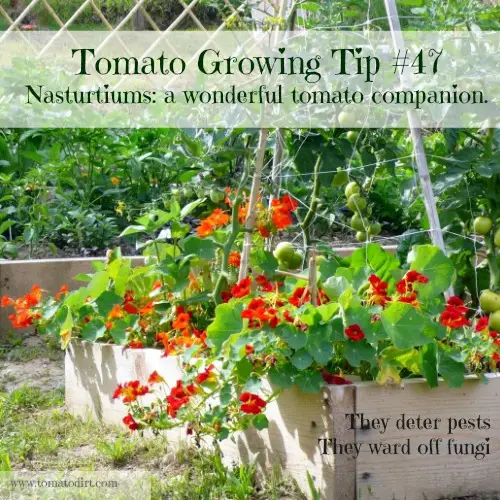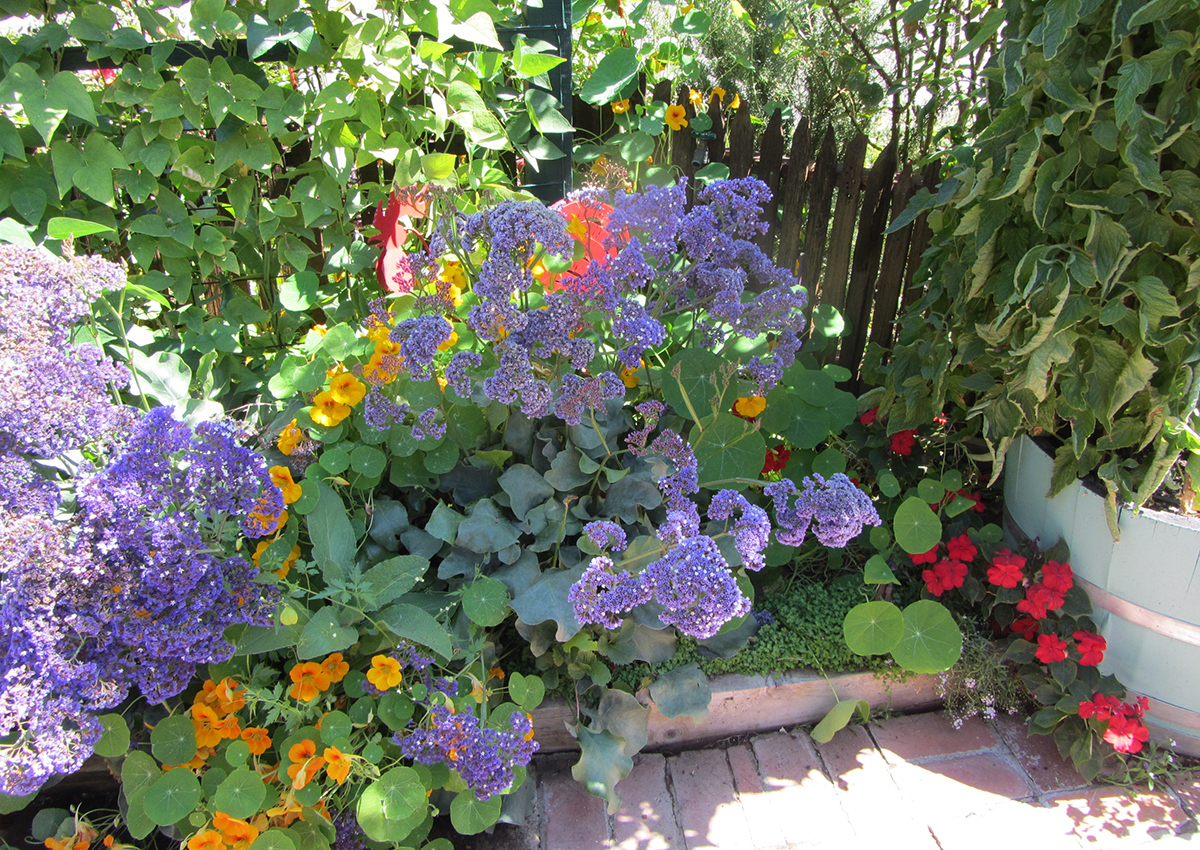The Ultimate Guide To Companion Planting With Nasturtiums
The Ultimate Guide to Companion Planting with Nasturtiums
Nasturtiums are a beautiful and versatile flower that can be grown in a variety of ways. They are also a great companion plant for many other vegetables and herbs. In this guide, we will discuss the benefits of companion planting with nasturtiums, as well as some of the best plants to pair them with.
Benefits of Companion Planting with Nasturtiums
There are many benefits to companion planting with nasturtiums. Here are a few of the most important ones:
- Attract beneficial insects. Nasturtiums attract a variety of beneficial insects, such as ladybugs, hoverflies, and lacewings. These insects help to control pests in your garden, such as aphids, whiteflies, and spider mites.
- Repel pests. Nasturtiums also have a reputation for repelling some common garden pests, such as cucumber beetles, squash bugs, and tomato hornworms.
- Improve soil quality. Nasturtiums are known to improve soil quality by adding nitrogen and other nutrients. They can also help to suppress weeds.
- Foster pollination. Nasturtiums are a good source of nectar and pollen, which attracts pollinators such as bees and butterflies. These pollinators are essential for a healthy garden.
- Add beauty and interest. Nasturtiums are not only beneficial to your garden, but they are also beautiful flowers that can add color and interest to any space.
Best Companion Plants for Nasturtiums
There are many different plants that can be paired with nasturtiums. Some of the best options include:
- Tomatoes: Nasturtiums are a great companion plant for tomatoes. They help to deter pests such as aphids and whiteflies, and they can also improve the flavor of tomatoes.
- Cucumbers: Nasturtiums are also a good companion plant for cucumbers. They help to deter pests such as cucumber beetles and squash bugs, and they can also help to improve the pollination of cucumbers.
- Peppers: Nasturtiums can also be planted with peppers. They help to deter pests such as aphids and whiteflies, and they can also help to improve the flavor of peppers.
- Carrots: Nasturtiums can be planted with carrots to help deter pests such as carrot flies.
- Beans: Nasturtiums can also be planted with beans. They help to deter pests such as aphids and bean beetles, and they can also help to improve the pollination of beans.
- Basil: Basil is a popular herb that can be planted with nasturtiums. It helps to attract beneficial insects, such as ladybugs and hoverflies, which help to control pests.
- Marigolds: Marigolds are another popular herb that can be planted with nasturtiums. They help to repel pests such as aphids, whiteflies, and spider mites.
- Lettuce: Lettuce can be planted with nasturtiums to help deter pests such as slugs and snails.
- Spinach: Spinach can also be planted with nasturtiums to help deter pests such as aphids and whiteflies.
What to Avoid Planting Near Nasturtiums
There are a few plants that should not be planted near nasturtiums. These include:
- Mint: Mint is a very aggressive plant that can quickly take over a garden. It is best to avoid planting it near nasturtiums or any other plant that you do not want to be overtaken.
- Broccoli: Nasturtiums can produce a chemical that can inhibit the growth of broccoli. It is best to avoid planting these two plants near each other.
- Cauliflower: Similar to broccoli, nasturtiums can produce a chemical that can inhibit the growth of cauliflower. It is best to avoid planting these two plants near each other.
Conclusion
Nasturtiums are a versatile and beneficial flower that can be grown in a variety of ways. They are also a great companion plant for many other vegetables and herbs. By planting nasturtiums with the right plants, you can improve the health and productivity of your garden.
Nasturtiums are beautiful and versatile flowers that can add a splash of color to any garden. But did you know that they can also help to deter pests and improve the growth of other plants? That's right, nasturtiums are a great choice for companion planting.
Here are a few of the best companion plants for nasturtiums:
- Brassicas: Nasturtiums are a natural pest repellent for brassicas, such as broccoli, cabbage, and cauliflower. They can help to deter aphids, cabbage worms, and other common pests.
- Cucurbits: Nasturtiums also make good companion plants for cucumbers, melons, and squash. They can help to repel cucumber beetles, squash bugs, and other pests that can damage these plants.
- Legumes: Nasturtiums can also help to improve the nitrogen content of the soil, which can benefit legumes such as beans and peas.
- Herbs: Nasturtiums can also be planted alongside herbs such as basil, mint, and thyme. These herbs can help to attract beneficial insects, such as pollinators, which can help to improve the pollination of the nasturtiums.
If you're looking for more information about nasturtium companion planting, I recommend visiting Gardenia Inspiration. This website has a wealth of information on the topic, including a list of the best companion plants for nasturtiums, as well as tips on how to plant and care for these beautiful flowers.
FAQ of nasturtium flowers companion planting
Frequently Asked Questions about Nasturtium Flowers Companion Planting
1. What are the best companion plants for nasturtiums?
Nasturtiums are a great companion plant for many other flowers and vegetables. They are known to repel pests such as aphids, whiteflies, and beetles. They also attract pollinators such as bees and butterflies. Some good companion plants for nasturtiums include:
- Tomatoes: Nasturtiums can help to deter tomato hornworms.
- Cucumbers: Nasturtiums can help to attract pollinators that help to pollinate cucumbers.
- Potatoes: Nasturtiums can help to deter potato beetles.
- Beans: Nasturtiums can help to improve the nitrogen content of the soil for beans.
- Strawberries: Nasturtiums can help to deter slugs and snails from strawberries.
2. What are the best conditions for nasturtiums?
Nasturtiums prefer full sun and well-drained soil. They can tolerate partial shade, but they will not bloom as well in those conditions. They are relatively drought-tolerant, but they will appreciate regular watering during hot, dry weather.
3. How long does it take for nasturtium flowers to grow?
Nasturtium flowers typically start blooming within four to six weeks of planting. However, it can take up to eight weeks for them to start flowering if they are planted from seed.
4. How do I care for nasturtium flowers?
Nasturtium flowers are relatively easy to care for. They need to be watered regularly, especially during hot, dry weather. They should also be fertilized every few weeks with a balanced fertilizer. To deadhead the flowers, simply pinch off the spent blooms. This will encourage the plant to produce more flowers.
5. What are some common problems with nasturtium flowers?
Some common problems with nasturtium flowers include:
- Aphids: Aphids are small, sap-sucking insects that can damage nasturtium leaves and flowers. They can be controlled with insecticidal soap or neem oil.
- Whiteflies: Whiteflies are small, flying insects that can also damage nasturtium leaves and flowers. They can be controlled with insecticidal soap or neem oil.
- Slugs and snails: Slugs and snails can eat nasturtium leaves and flowers. They can be controlled with traps, baits, or handpicking.
- Powdery mildew: Powdery mildew is a fungal disease that can cause white, powdery spots on nasturtium leaves. It can be controlled by watering the plants at the base and avoiding overhead watering.
Image of nasturtium flowers companion planting
Here are 5 different images of nasturtium flowers companion planting from Pinterest:
- Nasturtiums and tomatoes. Nasturtiums are known to attract beneficial insects, which can help to control pests on tomatoes. They also help to deter whiteflies and aphids.

- Nasturtiums and roses. Nasturtiums can help to deter aphids and other pests from roses. They also help to improve the drainage around roses, which can help to prevent fungal diseases.

- Nasturtiums and beans. Nasturtiums can help to improve the nitrogen levels in the soil for beans. They also help to deter bean beetles.

- Nasturtiums and cucumbers. Nasturtiums can help to deter cucumber beetles and squash bugs. They also help to improve the pollination of cucumbers.

- Nasturtiums and lavender. Nasturtiums and lavender are both fragrant plants that can attract pollinators. They also have different watering needs, so they can help to balance out the moisture levels in the soil.

Post a Comment for "The Ultimate Guide To Companion Planting With Nasturtiums"